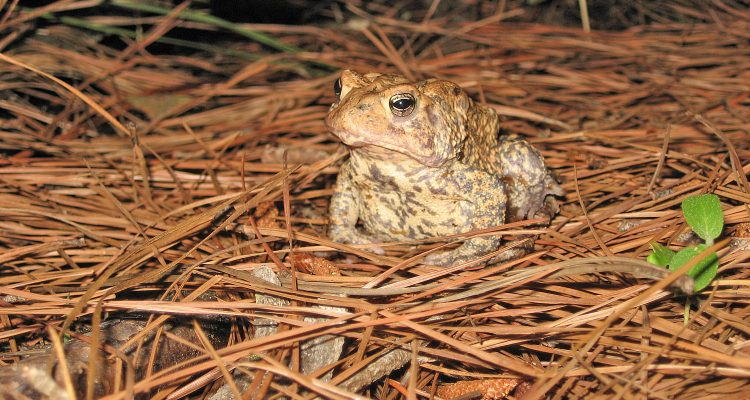
Bufo houstonensis
Bufo houstonensis NatureServe Explorer Species Reports — NatureServe Explorer is a source for authoritative conservation information on more than 50,000 plants, animals and ecological communtities of the U.S and Canada. NatureServe Explorer provides in-depth information on rare and endangered species, but includes common plants and animals too. NatureServe Explorer is a product of NatureServe in collaboration with the Natural Heritage Network.
ITIS Reports — Bufo houstonensis ITIS (the Integrated Taxonomic Information System) is a source for authoritative taxonomic information on plants, animals, fungi, and microbes of North America and the world.
FWS Digital Media Library — The U.S. Fish and Wildlife Service’s National Digital Library is a searchable collection of selected images, historical artifacts, audio clips, publications, and video.
The male Houston toad grows to 2–3.5 inches when mature with the female being larger and bulkier. Although generally brown and speckled, their color can range from black to purplish gray, sometimes with green patches. The toads typically live 2–3 years and create burrows for protection from the cold in the winter and the hot, dry conditions of the summer. They are nocturnal and feed on insects and small invertebrates.
During February and March, the male emits a high clear trill by distending a vocal sac on its throat, in hopes of attracting a mate. A female will choose a male based on certain characteristics of his call. Small isolated pools and ponds are the toad’s main breeding ground. A female toad will lay several thousand eggs in long single-egg strands that are fertilized externally by the male as they are laid. The eggs hatch within seven days and tadpoles take between 15–100 days to turn into little toads. The toadlets then leave the breeding pond and begin to forage for prey such as ants, beetles and moths.
They move by making short hops. Since they cannot usually outrun their predators such as snakes, turtles, large birds, raccoons, and other frogs, the toads have developed coloration and rough skin to camouflage themselves. Their skin also secretes chemicals that are distasteful, and sometimes poisonous, to predators. In addition to protecting the Houston toad from being eaten, some of these chemicals have proven useful medicines to treat heart and nervous disorders in humans.
| Status | Date Listed | Lead Region | Where Listed |
|---|---|---|---|
| Endangered | 10/13/1970 | Southwest Region (Region 2) | Wherever found |
| 09/17/1984 | Houston Toad Recovery Plan | View Implementation Progress | Final |
| 09/17/1984 | Houston Toad Recovery Plan | View Implementation Progress | Final |
| 04/21/2006 | 71 FR 20714 20716 | 5-Year Review of 25 Southwestern Species |
|
| 11/28/2011 | Houston Toad 5-year Review |
| 11/28/2011 | Houston Toad 5-year Review |












